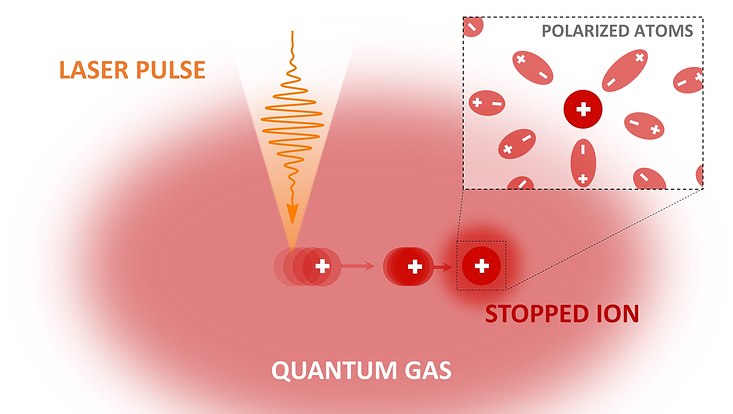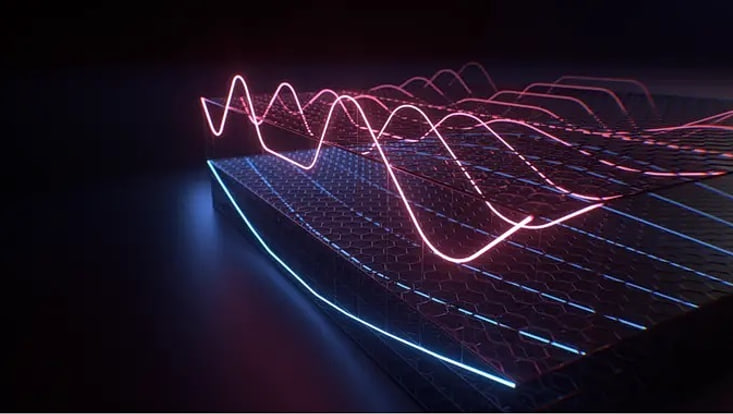Imaging of Matter
Catching an ion with a quantum gas
5 April 2024

Photo: L. Oghittu / Ph. Wessels-Staarmann
Hybrid quantum systems involving ultracold atoms and ions are a promising platform for quantum simulation and -computing. In a recently published paper in the journal Physical Review Research, scientists from the Centre for Optical Quantum Technologies at Universität Hamburg report on a robust way to create such a system by capturing an ion in a cloud of ultracold atoms.
In recent years, quantum mixtures of ultracold atoms and ions have attracted an increasing interest of researchers in the field of ultracold quantum matter. Processors based on trapped ions are regarded as frontrunners in the field of quantum computing. The new study hints that ultracold atoms may serve as an efficient coolant for these ionic quantum bits.
Prof. Ludwig Mathey, who also conducts research in the Cluster of Excellence "CUI: Advanced Imaging of Matter", explains the interplay: "A moving ion can be cooled and stopped completely by a cloud of ultracold atoms. For example, dragging a spoon through a jar filled with honey needs more force than dragging it through air. Similarly, an ion experiences friction by polarizing a Bose-Einstein condensate of ultracold atoms due to its charge."
The process is very robust
In a theoretical study, the scientists calculate the time-evolution of the ion, which slows down extremely fast and stops in the quantum gas after traveling a tiny distance of a few hundred nanometers. The higher the initial speed, the more the ion decelerates. “We find that this process is very robust,” says Mathey.
In addition, the team related their findings to recent experiments that may catch an ion created by an ultrashort laser pulse in a quantum gas. This would allow quantum simulation of impurity physics, where the bond between atoms and ion alters the ionic movement.
Citation
L. Oghittu, J. Simonet, Ph. Wessels-Staarmann, M. Drescher, K. Sengstock, L. Mathey, A. Negretti
“Cooling dynamics of a free ion in a Bose-Einstein condensate”
Phys. Rev. Research 6, 023024


